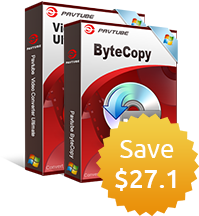On August 2 nd, Microsoft launched the awaited revised version of Xbox One named as Xbox One S, which now supports to stream 4K content on Netflix and Amazon Video and watch Ultra HD Blu-ray movies in stunning visual fidelity with High Dynamic Range. Like Xbox One, the Xbox One S also has a built-in media player app that enables you to play video and music files you've ripped or downloaded by plugging in a USB drive or streaming them over your local network. The following article will show you what <Xbox One S supported file formats and how to stream local video to Xbox One S.
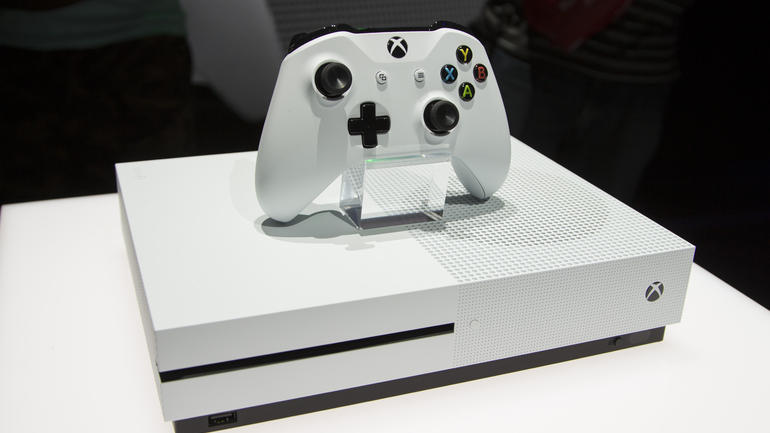
Xbox One S supported file formats
Make sure the file types that you try to stream or play with Xbox One S are included in Xbox One S Media Player app supported formats list listed as below, or you will receive an error message.
Video formats: 3GP video, 3GP2, AVI DivX, DV AVI, AVI uncompressed, asf, AVI Xvid, H.264 AVCHD, M-JPEG, .mkv, .mov, MPEG-PS, MPEG-2, MPEG-2 HD, MPEG-2 TS, H.264/MPEG-4 AVC, MPEG-4 SP, WMV, WMV HD
Audio formats: 3GP audio, AAC, ADTS, MP3, WAV, WMA, WMA Lossless, WMA Pro, WMA Voice
Xbox One S unsupported file formats
Video formats: FLV, XAVC, XAVC S, H.265/HEVC, MPEG-1, VP8, VP9, MVC, Real Video, Theora, Prores
Audio formats: Vorbis, Opus, AC-3, DTS, PCM, LPCM, FLAC, ALAC, MLP/Dolby TrueHD, DTS-HD
Play Unsupported file formats on Xbox One S
The most efficient way to play unsupported files on Xbox One S is downloading a third-party media conversion tool such as Pavtube Video Converter Ultimate for Windows/Mac (best video converter review) to convert not only Blu-ray/DVD disc and also above listed incompatible digital file formats with the resolution of 4K/2K/HD/SD to Xbox One S media player app recogizable video and audio file formats. If you have no idea how to set the best video playing settings for Xbox One, you can use the program to directly output Xbox One preset profile formats with all the optimzied settings such as video codec, bit rate, frame rate, resolution and audio codec, bit rate, sample rate and channels for viewing on Xbox One S with best video and audio quality.
Step by step to convert unsupported file formats for Xbox One S playback
Step 1: load unsupported media source into the program.
Step 2: Choose output file formats. You can either choose one of Xbox One S supported file fomrats listed above or direct output Xbox 360 preset profile formats which can also apply to Xbox One S.
Step 3: Start incompatilbe file formats to Xbox One S converion process.
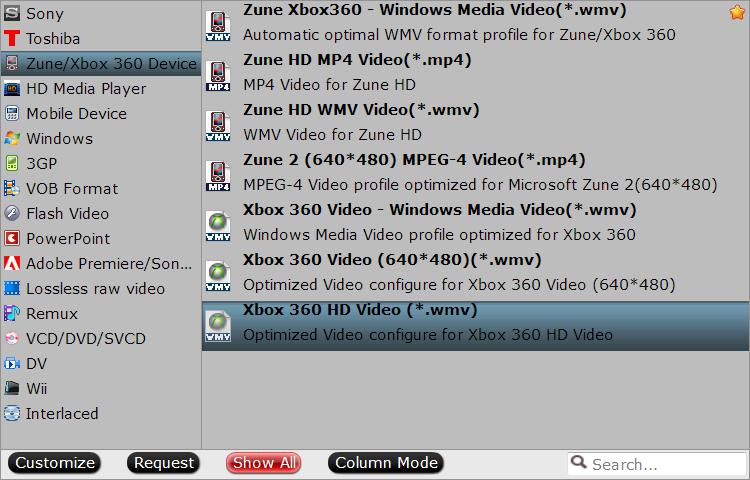
Stream local video to Xbox One S
Install the Xbox Media Player App
Install the Xbox Media Player app from the Xbox Store. To launch the Xbox Store, head to My Games & Apps > Apps > Find more in the Xbox Store. Search for "media player" and install the Media Player app.
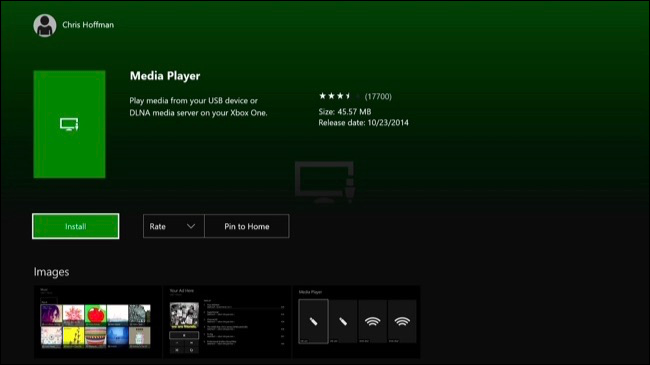
Play video and music on Xbox One S from a USB drive
If you have a USB flash drive or external drive, you can use it to play videos on the Xbox One. The Xbox One S supports USB 1, USB 2, and USB 3 drives. The drive must be formatted in FAT16, FAT32, exFAT, or NTFS. If you have a Windows PC, your USB drive will work on your Xbox One S as long as your Windows PC can read it. If you have a Mac, be sure to format the drive as exFAT and not with a Mac-only file system like HFS+.
Connect the drive to your computer and copy your video, music, or picture files onto it. Eject it from your computer and connect it to one of the USB ports on your Xbox One. There Xbox One has three USB ports you can use: Two on the back of the console, and one on the side.
Open the Media Player app and you'll see your connected drive as an option. Select the drive and you can browse all the media files on it and play them, controlling the playback with your Xbox One S controller.
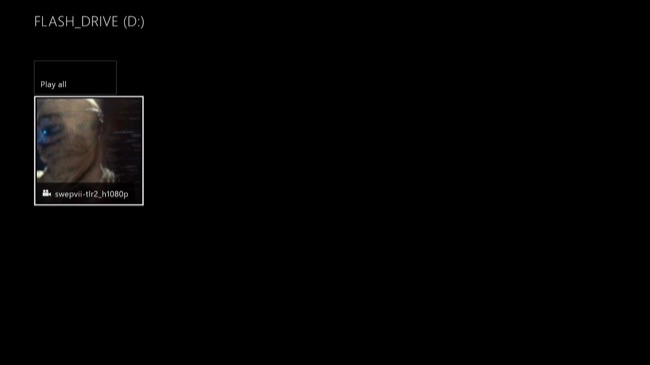
Stream media files from Xbox One S via DLNA server or Plex
You could also use a network attached storage (NAS) device as a DLNA media server if you have one.
To do this, you'll need to set up a DLNA server on your PC or Mac first. Microsoft recommends -and officially supports -Windows Media Player as a DLNA server. If you use a Mac, you'll need to find a third-party DLNA server like Plex.
To activate the DLNA server included with Windows, open the Control Panel, search for "media," and click the "Media streaming options" link under Network & Sharing Center. Click the "Turn on media streaming" button here. This makes the files available in your Music, Pictures, and Videos libraries available for streaming. (So if your video file isn't in your Videos folder already, you'll want to put it there now.)
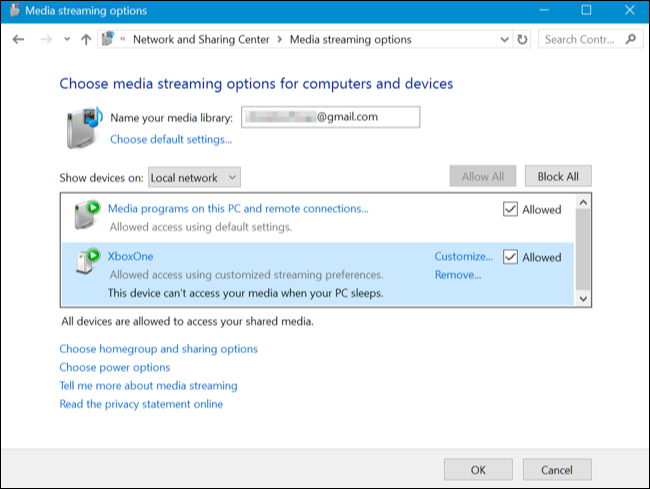
Once you have a DLNA server set up, it will appear in your Xbox One S' Media Player app as an option alongside any connected USB drives, allowing you to browse and stream media files stored in your media libraries.
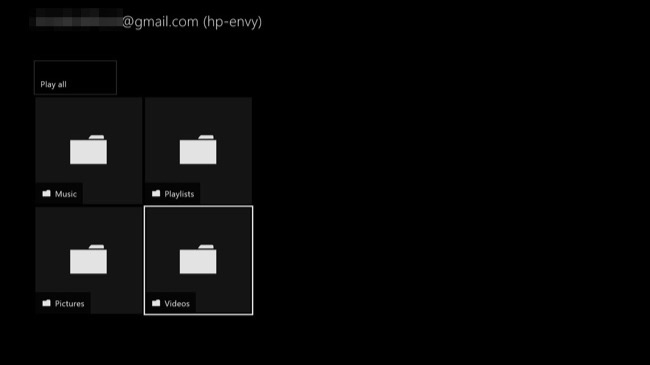
Stream Media Files to Xbox One S With "Play To" or "Cast to Device"
You can also use the "Play To" feature to play music from your computer to your Xbox One. This feature is now called "Cast to Device" on Windows 10, but it's still called "Play To" on the Xbox One S. It also relies on DLNA in the background. However, you don't have to set up a DLNA server. You just browse to the media files on your computer and tell Windows to play them on your Xbox One S.
This feature was introduced in Windows 7, and it still works on Windows 8, 8.1, and 10.
To do this, ensure the appropriate option is enabled on your Xbox One S. Head to Settings > All Settings > Preferences > Game DVR & Streaming and ensure the "Allow Play To Streaming" option is enabled.
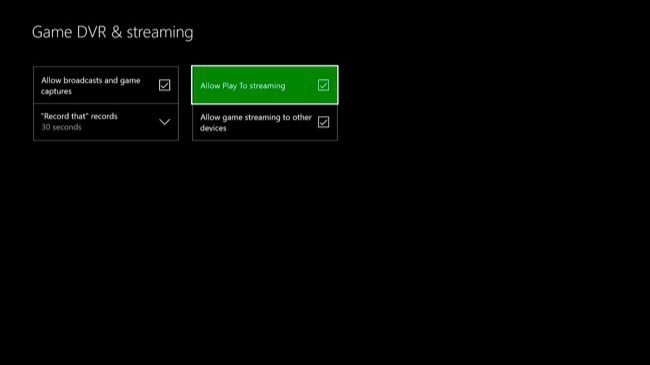
To play music or video files on your Xbox One S, just right-click them in File Explorer or Windows Explorer and use the "Cast to Device" or "Play To" menu to select your Xbox One S.
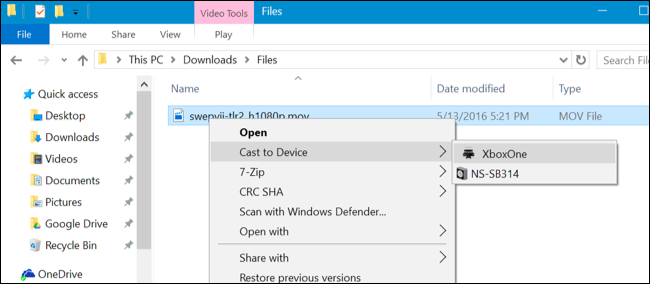
A small Windows Media Player window will appear, and you can use to to manage your playlist and control playback from your computer. You can also control playback on the console itself with your Xbox One S controller.
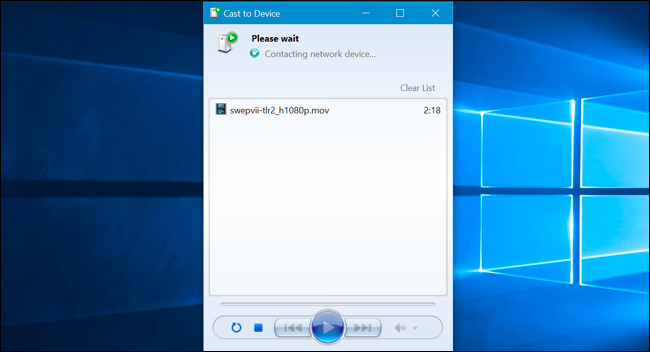
If you haven't yet installed the Movies & TV app on your Xbox One S, you'll be prompted to do so. The page for the app on the Xbox Store will open -just select "Install" to install it. You'll have to install the app before the "Play To" or "Cast to Device" streaming will work.
